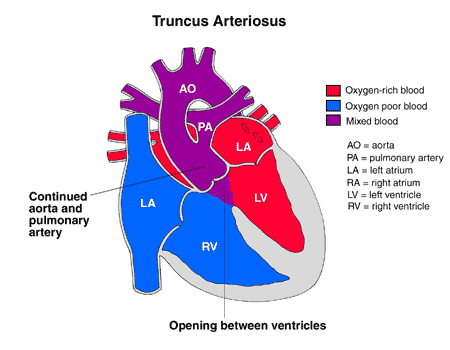
Truncus arteriosus is a heart defect that is present at birth (congenital).
Truncus arteriosus occurs when the two main blood vessels, the aorta and the pulmonary artery, don’t separate completely as the fetus develops. A hole in the wall between the two lower chambers of the heart (ventricular special defect) can also be present.
The blood that passes through this combined vessel has a lower oxygen content than normal. Because of this, babies with truncus arteriosus will have blue skin, lips and nailbeds (cyanosis).




